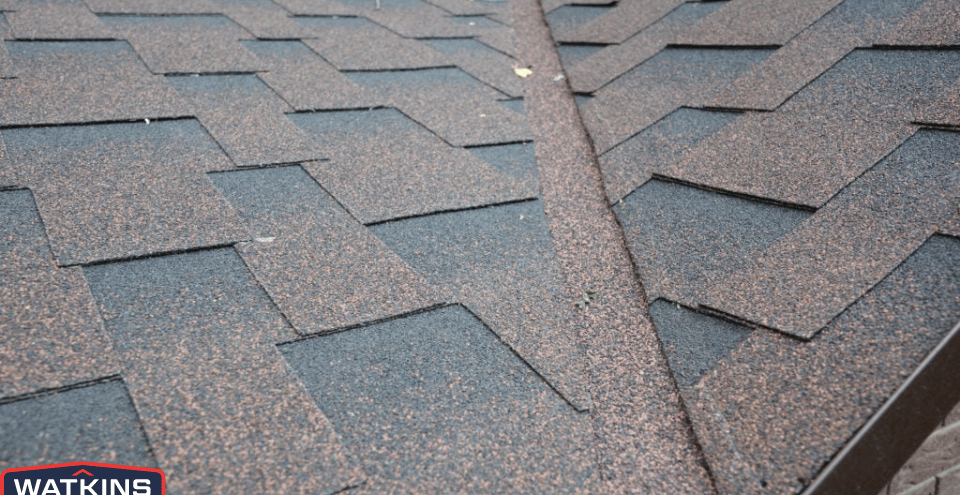The Importance of Flashing with Watkins Construction & Roofing. When it comes to roofing, one of the most critical components that often goes unnoticed is flashing. Flashing plays a vital role in keeping water out of your home and ensuring your roof remains watertight. It’s an unsung hero, working silently to protect your property from leaks, water damage, and the costly consequences of moisture intrusion. In this article, we’ll delve into the importance of flashing, its various types, and why it’s crucial for the longevity and functionality of your roof.

What Is Flashing?
Flashing is a thin, weather-resistant material typically made of metal or roofing-grade material. It’s strategically installed in vulnerable areas of your roof where water is prone to infiltrate. The primary purpose of flashing is to create a water-resistant barrier, directing water away from these vulnerable spots.
Areas That Require Flashing:
Roof Valleys: Valleys are the V-shaped intersections where two roof slopes meet. They are natural channels for rainwater. Without proper flashing, water can penetrate these areas and seep into your home, causing interior damage.
Chimneys: The area where the chimney meets the roof is a common entry point for water. Flashing is used to seal this juncture and prevent water intrusion.
Skylights: Skylights bring natural light into your home but can also be a potential source of leaks if not properly flashed.
Roof Penetrations: Any roof penetration, such as vents, plumbing stacks, or exhaust pipes, requires flashing to create a watertight seal around them.
Wall-to-Roof Transitions: Flashing is used where a roof meets a vertical wall, such as in dormers or roof additions.
Types of Flashing:
There are several types of flashing materials, each designed for specific applications:
Step Flashing: This type of flashing is typically used in roof-to-wall intersections. It consists of small L-shaped pieces of metal that are layered as shingles or siding are installed, creating a continuous barrier against water intrusion.
Counter-Flashing: Counter-flashing is installed over the top of base flashing to provide an extra layer of protection. It’s often used in masonry walls to protect the base flashing from the elements and to enhance its longevity.
Base Flashing: Base flashing is installed at the base of roof penetrations such as chimneys or vents. It forms a watertight seal between the penetration and the roofing material.
Valley Flashing: Valley flashing is used in the roof valleys to channel water away from this critical intersection. It is often made of metal and should be installed in a way that allows water to flow freely without obstruction.
The Importance of Proper Flashing:
Preventing Water Damage: The primary function of flashing is to keep water out of your home. Without proper flashing, even a well-installed roof can become susceptible to leaks and water damage.
Protecting Structural Integrity: Water intrusion can weaken the structural integrity of your home over time. It can lead to rotting wood, damaged insulation, and compromised framing, which can be expensive to repair.
Preventing Mold and Mildew: Moisture trapped in your home due to leaks can create an ideal environment for mold and mildew growth. These can have serious health implications and are costly to remediate.
Enhancing Longevity: Flashing, when installed correctly, can significantly extend the lifespan of your roof. It protects vulnerable areas from wear and tear caused by water infiltration.
Preserving Home Value: A roof with proper flashing is essential for maintaining the value and curb appeal of your home. Water stains and damage can significantly reduce your property’s value.
Common Flashing Mistakes:
While flashing is crucial, it’s equally important that it’s installed correctly. Common flashing mistakes to avoid include:
Improper Installation: Flashing must be installed by experienced professionals who understand its importance and the specific requirements of your roof.
Inadequate Sealant: Sealant should be applied where necessary, but it should not be relied upon as the primary means of protection. Properly installed flashing should provide the primary barrier against water.
Using the Wrong Material: Using the wrong type of flashing material or using subpar materials can compromise its effectiveness and durability.
Neglecting Maintenance: Flashing can deteriorate over time due to exposure to the elements. Regular roof inspections and maintenance are essential to ensure flashing remains in good condition.
Conclusion:
Flashing may not be the most visible part of your roof, but it’s undoubtedly one of the most critical. Its role in keeping water out of your home, preserving structural integrity, and preventing costly damage cannot be overstated. When installing or repairing a roof, make sure to work with experienced professionals who understand the importance of proper flashing and can ensure your roof remains watertight for years to come. By investing in quality flashing, you’re investing in the long-term health and durability of your home.
For more information, you can reach Watkins Construction & Roofing at 601-488-3179. We service areas in Jackson, Flowood, Clinton, and Ridgeland, MS.
